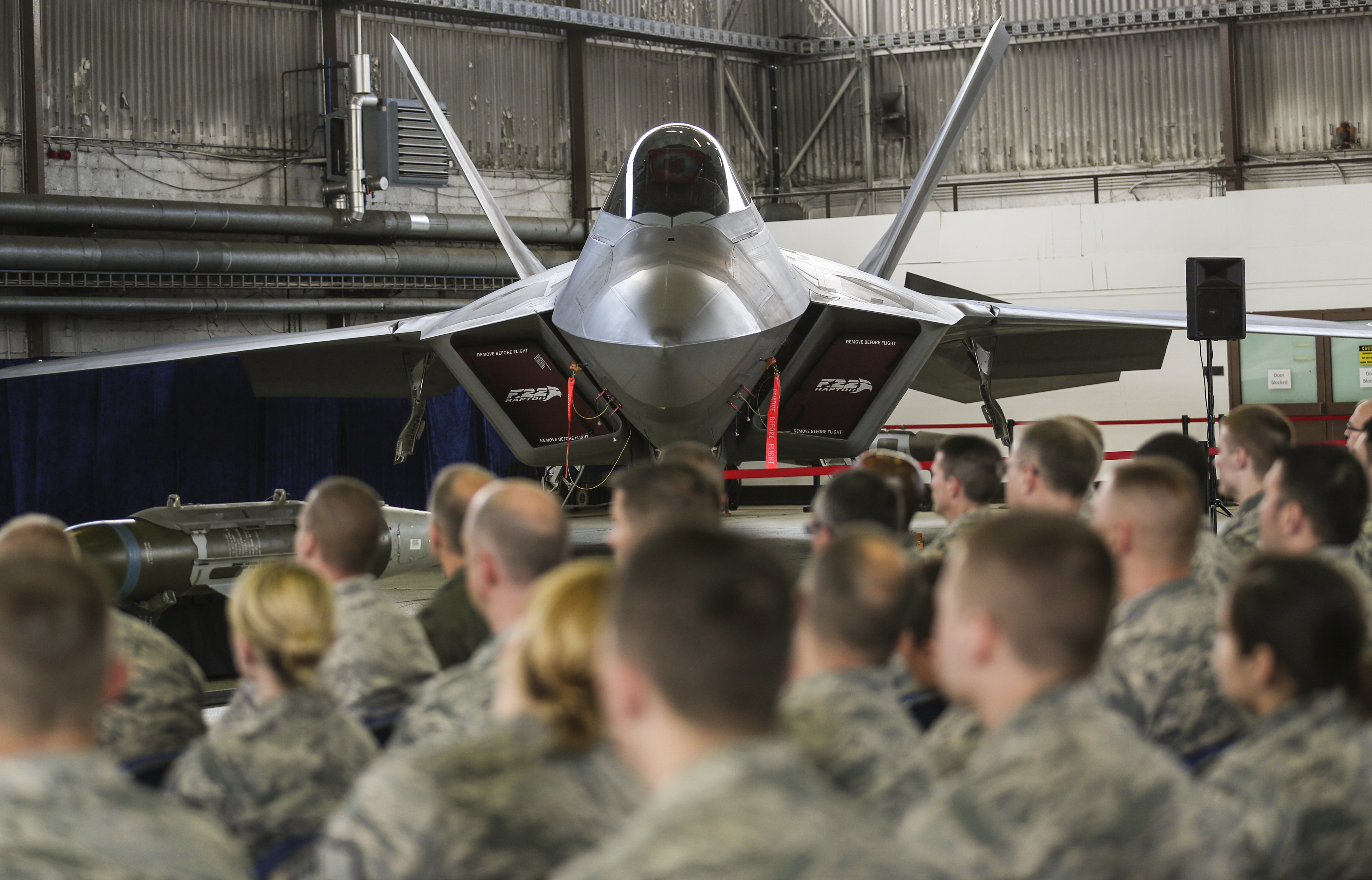America can still destroy the world
The decline of U.S. military power has been greatly exaggerated

The traditional image — and priorities — of the United States military have undergone a profound shift. Long thought of as organized around fleets of ships, squadrons of fighter planes, and long lines of tanks, the new public image of the armed forces is now Navy SEALs, IED protective vehicles, Reaper drones, and gunships.
At the same time, potential adversaries China and Russia have pushed on with a new generation of conventional weapons suitable for so-called "big wars," with almost monthly announcements of new fighters, surface ships, bombers, and tanks.
After 14 years of guerrilla warfare, the question is: Is the United States in danger of losing its commanding "big war" technological edge?
The Week
Escape your echo chamber. Get the facts behind the news, plus analysis from multiple perspectives.

Sign up for The Week's Free Newsletters
From our morning news briefing to a weekly Good News Newsletter, get the best of The Week delivered directly to your inbox.
From our morning news briefing to a weekly Good News Newsletter, get the best of The Week delivered directly to your inbox.
While the U.S. government, Pentagon, and industry have been fixated on Iraq and Afghanistan, Russia and the People's Republic of China have not stood still. A growing economy in both countries and a desire to provide an alternative to American hegemony prompted both to invest in a generation of new weapons.
Progress has been rapid, and over the past five years the People's Republic of China and Russia have announced one new weapon system after another. China has acquired its first aircraft carrier and is developing a new heavy airlifter, two fifth generation stealth fighters, new destroyers, frigates, corvettes, and submarines.
Russia is developing the PAK-FA fifth generation fighter and the "Armata" family of heavy combat vehicles, including a brand-new tank. A new Russian nuclear submarine, armed with strategic nuclear weapons, has taken up residence with the Russian Pacific Fleet.
Despite this new foreign arsenal, all is not as it seems.
A free daily email with the biggest news stories of the day – and the best features from TheWeek.com
In July 2013, as fighter planes took off and landed from a Chinese aircraft carrier for the first time. At the same time, half a world away the United States Navy was doing the exact same thing…except the plane wasn't manned. The experimental X-47B Unmanned Combat Air Vehicle performed flawless takeoff and landing tests on the carrier USS Theodore Roosevelt.
China has built up a fleet of unmanned planes, but is nowhere close to the sophistication necessary to operating a drone from an aircraft carrier. Russia is even farther behind, with its drone program lagging considerably.
The United States has also made great strides in directed energy weapons. The U.S. Navy's first laser weapon, LaWS, deployed in 2014 to the Persian Gulf. The Pentagon is now looking into adding lasers to the F-35 Joint Strike Fighter, AC-130 gunship, and Army ground vehicles. Next year, the Navy will take its new railgun to sea. Powered by electricity, the railgun can reportedly hurl a 23-pound projectile at speeds exceeding Mach 7 to ranges of up to 100 miles.
Meanwhile, there is little to no news of comparable progress on directed energy weapons from China and Russia.
In the skies, the United States has a decisive lead in fifth generation aircraft. The F-22 Raptor air superiority fighter has been in service since 2005. A second design, the F-35 Joint Strike Fighter has had a troubled history but appears to have solved most technical problems, with all three versions set to be operational by 2020.
Meanwhile in China, the Chengdu J-20 "Soaring Dragon" and J-31 "Gyrfalcon" are still in development, thanks to the Chinese aviation industry's uneven technological progress. In Russia, the PAK-FA fifth generation fighter has been beset by technical problems. None of the three planes have firm delivery dates.
Finally, Russia recently moved the Yuri Dolgorukiy, a brand-new ballistic missile submarine, to its new home with the Russian Pacific Fleet. Displacing 14,500 tons and armed with 20 Bulava ballistic missiles, Yuri Dolgorukiy could singlehandedly devastate the U.S. West Coast with nuclear weapons. At the same time, China has deployed four submarines of the Jin class.
As important as both of these programs are — providing a key retaliatory capability for both countries — both classes of submarine have had serious shortcomings. The Bulava missile failed in nine out of 23 test launches, a seemingly inconceivable problem for a country like Russia with so much experience with rockets. The Jin class is noisy, a very undesirable trait for a submarine, and the U.S. Department of Naval Intelligence recently rated the Jin subs as noisier than Soviet submarines produced 40 years ago.
For its part, the United States is in the advanced stages of designing a new generation of ballistic missile submarine of its own. Yet no serious engineering challenges threaten the program. Virtually nobody thinks there will be problems like those encountered by the Yuri Dolgorukiy and the Jin-class — just a staggering cost.
Despite a temporary hiatus from big power war, the U.S. has a considerable lead in military technology, and will so for the foreseeable future. The lead is not a comfortable one — both China and Russia have the potential to make breakthroughs of their own — and needs to see a continued commitment to research and development. Still, in the meantime, research on key technologies — and ineptitude on the part of our rivals — guarantees American supremacy for at least the near future.
Kyle Mizokami is a freelance writer whose work has appeared in The Daily Beast, TheAtlantic.com, The Diplomat, and The National Interest. He lives in San Francisco.
-
 7 bars with comforting cocktails and great hospitality
7 bars with comforting cocktails and great hospitalitythe week recommends Winter is a fine time for going out and drinking up
-
 7 recipes that meet you wherever you are during winter
7 recipes that meet you wherever you are during winterthe week recommends Low-key January and decadent holiday eating are all accounted for
-
 Nine best TV shows of the year
Nine best TV shows of the yearThe Week Recommends From Adolescence to Amandaland
-
 Bombing at girls' school in Kabul kills at least 50, including students
Bombing at girls' school in Kabul kills at least 50, including studentsSpeed Read
-
 Garland says DOJ is 'pouring its resources' into stopping domestic terrorists 'before they can attack'
Garland says DOJ is 'pouring its resources' into stopping domestic terrorists 'before they can attack'Speed Read
-
 Suspected Israeli cyberattack on Iranian nuclear site complicates U.S.-Iran nuclear deal talks
Suspected Israeli cyberattack on Iranian nuclear site complicates U.S.-Iran nuclear deal talksSpeed Read
-
 North Korea fires 2 ballistic missiles into sea
North Korea fires 2 ballistic missiles into seaSpeed Read
-
 U.S. airstrikes target Iranian-backed militia facilities in Syria
U.S. airstrikes target Iranian-backed militia facilities in SyriaSpeed Read
-
 Rochester police who killed Daniel Prude during mental health crisis won't face charges
Rochester police who killed Daniel Prude during mental health crisis won't face chargesSpeed Read
-
 Mike Pence's 'nuclear football' was also apparently at risk during the Capitol siege
Mike Pence's 'nuclear football' was also apparently at risk during the Capitol siegeSpeed Read
-
 Trump publicly attacked Pence during the Capitol riot knowing Pence was in trouble, GOP senator suggests
Trump publicly attacked Pence during the Capitol riot knowing Pence was in trouble, GOP senator suggestsSpeed Read